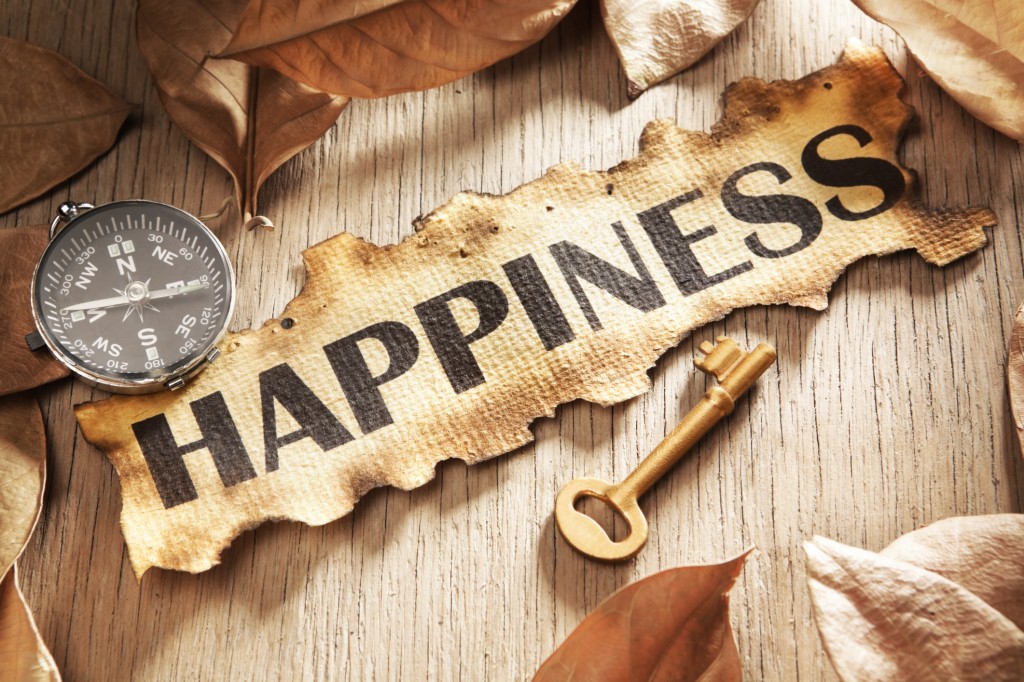 What do you absolutely love to do? It need not be a big thing. Perhaps you really love to watch football, or maybe you really enjoy baking your own bread. Often, we get so caught up in living our life that we forget to take time for life’s simple pleasures. Many people find that their life is so full of responsibilities that they rarely take time for fun and adventure. If that sounds like you, then you’ll benefit by using the “Pain and Pleasure List.” The Pain and Pleasure List is a catalog of at least ten things you enjoy doing and a list of ten things you don’t particularly care for. It helps you clarify what really turns you on in life and what you do only because you have to – or think you should. While we all need to do things we don’t like from time to time, life is not meant to be a series of burdens and responsibilities. By having a Pain and Pleasure List, you’ll be able to make important changes in your life with a lot more ease.
What do you absolutely love to do? It need not be a big thing. Perhaps you really love to watch football, or maybe you really enjoy baking your own bread. Often, we get so caught up in living our life that we forget to take time for life’s simple pleasures. Many people find that their life is so full of responsibilities that they rarely take time for fun and adventure. If that sounds like you, then you’ll benefit by using the “Pain and Pleasure List.” The Pain and Pleasure List is a catalog of at least ten things you enjoy doing and a list of ten things you don’t particularly care for. It helps you clarify what really turns you on in life and what you do only because you have to – or think you should. While we all need to do things we don’t like from time to time, life is not meant to be a series of burdens and responsibilities. By having a Pain and Pleasure List, you’ll be able to make important changes in your life with a lot more ease.
 The first step in using the Pain and Pleasure List is to simply create it. The singular act of writing down ten things you love to do and ten things you don’t care for can reveal a lot about your life. Recently, a client named James made his list while in my office. He had originally come to see me because of depression, stress at work, and problems with his wife. This was the list he created:
The first step in using the Pain and Pleasure List is to simply create it. The singular act of writing down ten things you love to do and ten things you don’t care for can reveal a lot about your life. Recently, a client named James made his list while in my office. He had originally come to see me because of depression, stress at work, and problems with his wife. This was the list he created:
- Go to work.
- Market myself or my products.
- Clean the house.
- Cook.
- Be around disagreeable people.
- Spend time with my parents.
- Taxes and paying the bills.
- Give my wife a massage.
- Go shopping for clothes or gifts.
- Argue with wife.
- Ride my bike
- Be by myself, reading a good book.
- Play with the dog.
- Eat good food.
- Travel.
- Get a massage.
- Spend time in nature.
- Make love with my wife.
- Drive and listen to music.
- Watch a good football game.
You can write you own Pain and Pleasure List here.
After James made his Pain and Pleasure List, I had him estimate the number of hours every month he spent doing each activity. When he finished this part of the exercise, it was brutally clear why he was depressed, stressed, and messed-up with his wife. The total number of hours  on the “pain” side of the list was a whopping 215 hours per month. The total number of hours on the “pleasure” side of the list was a meager 32 hours a month. That’s almost a seven-to-one ratio of pain to pleasure. I’ve found that when the degree of pain as compared to pleasure rises above a five-to-one ratio, people dislike their life. In order to feel good again, such people need to spend less time doing “painful” activities, and more time doing what they enjoy.
on the “pain” side of the list was a whopping 215 hours per month. The total number of hours on the “pleasure” side of the list was a meager 32 hours a month. That’s almost a seven-to-one ratio of pain to pleasure. I’ve found that when the degree of pain as compared to pleasure rises above a five-to-one ratio, people dislike their life. In order to feel good again, such people need to spend less time doing “painful” activities, and more time doing what they enjoy.
The first key to changing your life and behavior is to be aware of what’s currently not working. If, after completing your own Pain and Pleasure List, you see a similar pattern to James’, then you’ll know you’ve been denying yourself too much. You need to put pleasurable activities at a greater level of importance in your life. Sometimes people think if they make pleasure a bigger priority, the rest of their life will fall apart. Not true. When we don’t have enough good times in our life, we become less capable and effective in our career and relationships. We pay a price. As we feel good more regularly, the rising sea of our emotions tends to lift the various “boats” of our life.
 Although less frequently, some people who complete the Pain and Pleasure List see a pattern of having too much pleasure in their life. They tend to avoid responsibilities and discipline at all costs. Unfortunately, this form of hedonism doesn’t work well long term. By avoiding difficult things now, people with this predilection often create problems in their finances and relationships later on. The key to having a successful life is to find the right balance of pain to pleasure. It must be a balance that works, not only in one’s current life, but it must also work long term.
Although less frequently, some people who complete the Pain and Pleasure List see a pattern of having too much pleasure in their life. They tend to avoid responsibilities and discipline at all costs. Unfortunately, this form of hedonism doesn’t work well long term. By avoiding difficult things now, people with this predilection often create problems in their finances and relationships later on. The key to having a successful life is to find the right balance of pain to pleasure. It must be a balance that works, not only in one’s current life, but it must also work long term.
Another way the Pain and Pleasure List can be useful is as a convenient reminder of what you really like to do. Sometimes, we get so caught up in the various “chores of life” that we forget to enjoy ourselves. By putting the Pain and Pleasure List in a place where you’ll see it often, it can softly help you to remember the direction you want to go. Ultimately, to change your life, you need to change individual behaviors. If there’s a lot of pain and little pleasure in your life, ask yourself the following two questions:
- Are there any activities on the “pain” side of the list that I can easily change, do less
of, or have someone else do instead? - Are there any activities on the “pleasure” side of the list that I can easily do more of,
beginning with scheduling time for it in my life right now?
 As you ask yourself these two questions, search your lists for answers you can immediately act upon. Then, take action. Schedule a fun activity into your busy week, or see if you can get someone else to do what you always hate doing. Even a small change can snowball into a major shift in your attitude and disposition. Let the Pain and Pleasure List be your caring companion—gently reminding you of the road to greater fulfillment.
As you ask yourself these two questions, search your lists for answers you can immediately act upon. Then, take action. Schedule a fun activity into your busy week, or see if you can get someone else to do what you always hate doing. Even a small change can snowball into a major shift in your attitude and disposition. Let the Pain and Pleasure List be your caring companion—gently reminding you of the road to greater fulfillment.
Get started right now by downloading a blank Pain and Pleasure List here. And read more about living a happier life in Happiness Resources.



 The way we tend to express love to another person is, in most cases, the way in which we would like to receive it. I have fallen into this trap. I used to give my wife massages because that’s what makes me feel loved. Even if a gorilla gave me a massage, I’d feel totally loved. My wife used to frequently tell me she loved me because that’s what she wanted to hear. When people are unaware of their partner’s preferred ways of feeling loved, they end up expending a lot of energy that goes unappreciated. Yet by knowing exactly what helps your partner feel safe and loved, it becomes infinitely easier to create intimacy on a consistent basis.
The way we tend to express love to another person is, in most cases, the way in which we would like to receive it. I have fallen into this trap. I used to give my wife massages because that’s what makes me feel loved. Even if a gorilla gave me a massage, I’d feel totally loved. My wife used to frequently tell me she loved me because that’s what she wanted to hear. When people are unaware of their partner’s preferred ways of feeling loved, they end up expending a lot of energy that goes unappreciated. Yet by knowing exactly what helps your partner feel safe and loved, it becomes infinitely easier to create intimacy on a consistent basis. By knowing how your own heart is charmed, you can reveal this important information to your partner. Try the previous exercise on yourself, or have your partner read it to you. You may be surprised to discover exactly what your partner does that creates a warm feeling of safety and love in you. Once your mate knows how to help you feel loved, they can more easily and consistently show you they care.
By knowing how your own heart is charmed, you can reveal this important information to your partner. Try the previous exercise on yourself, or have your partner read it to you. You may be surprised to discover exactly what your partner does that creates a warm feeling of safety and love in you. Once your mate knows how to help you feel loved, they can more easily and consistently show you they care.

